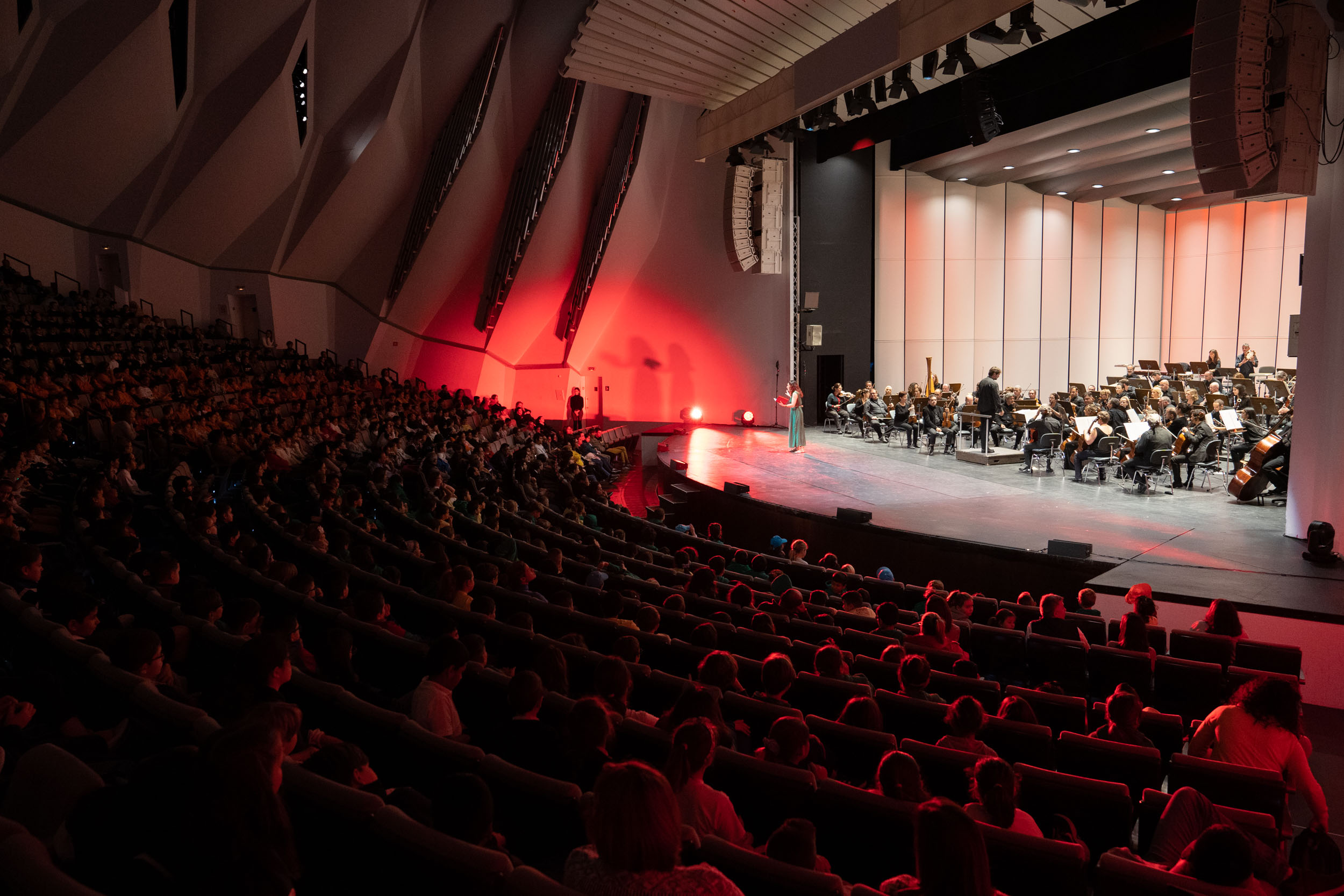On Saturday Sinfónica de Tenerife brings classical music to the youngest with “The myth of Persephone”

Sinfónica de Tenerife is bringing classical music to the youngest audiences with The myth of Persephone, a didactic concert to be enjoyed by all the family at 12:00 noon on Saturday, 1 February at Auditorio de Tenerife’s Sala Sinfónica. Tickets can be bought through the usual channels: at the box office from 10:00 am to 7:30 pm Monday to Saturday; by phone on 902 317 327; or via the internet on websites www.sinfonicadetenerife.es and www.auditoriodetenerife.com.
The myth of Persephone started this morning [Wednesday, the 29th] at the Auditorio de Tenerife with two of the four sessions for schools, which are held again tomorrow [Thursday 30th] at 10:00 am and l1:30 am. A total of 4,200 primary school children and Special Education students will enjoy the show at the Sala Sinfónica. This didactic concert, which will be attended by 52 schools, is part of the Sinfónica de Tenerife’s outreach section.
In this new activity, the Cabildo’s ensemble is relying on conductor Ignacio García-Vidal who will share the stage with an actress and four dancers of the Centro Internacional de Danza Tenerife in a choreography by Héctor Navarro, to tell the story of Persephone, the Greek myth that explains the origin of the seasons.
Ana Hernández Sanchiz’s voice will string together a musical story based on the ballet The Seasons by the Romantic author Alexander Glazunov, to be told through the language of classical music. The children will be able to take part from their seats through songs, rhythm or dance.
The Greek legends explains that Persephone, daughter of Zeus, was gathering some flowers in the company of her nymph friends. She was about to pick a lily when a cleft broke on the earth and Hades, the god of the underworld, emerged and took her away. Legend has it that it is precisely her abduction the origin of Spring as when Persephone is carried away to the underworld, flowers grew sad and died. In contrast, when she returned, flowers were reborn with joy.
The core of the concert is Alexander Glazunov’s The Seasons, which is preceded by the first of the Gymnopédies penned by Erik Satie, although Debussy orchestrated them as number 2. This light piano piece was composed and published in 1888 and is usually classified as dance. In fact, the name refers to a dance that used to be practised by young naked dancers in Sparta.
Glazunov’s score was written for the Russian Imperial Ballet, that premiered it in 1900 with a choreography by Marius Petipa. Rather than plot it is a series of pictures that describe the seasons: the cold, leaves falling, the breeze, birds… In this composition placed in the late Romanticism and with some Impressionist touches, Glazunov followed in Tchaikovsky’s footsteps and his great ballets.


